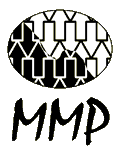Ethnosurvey Questionnaire
The Ethnosurvey is eclectic and draws on methods and approaches well-known in sociology, anthropology, psychology, and education. Its contribution and complexity lies in the way all these methods are combined within a single study. The main idea for the Ethnosurvey is “to complement qualitative and quantitative procedures, so one’s weakenesses become the other’s strength, yielding a body of data with greater reliability and more internal validity than is possible to achieve using either method alone.” (Massey 1987).
The Ethnosurvey contains a series of tables that are organized around a particular topic, giving coherence to the “conversation”. It follows a semi structured format to generate an interview schedule that is flexible, unobtrusive and non-threatening. It requires that identical information be obtained for each person, but questions, wording and ordering are not fixed. The precise phrasing and timing of each query is left to the judgment of the interviewer, depending on circumstances.
In addition, the Ethnosurvey is explicitly designed to provide quantitative data for multi-level analysis by compiling data at the individual, household, and community levels. Detailed community-level data are compiled at the time of the survey by the fieldwork supervisor; these data are of great help to interpret the socioeconomic context within which individuals and households interact (Massey 1987). This small questionnaire is referred to as the Community Data Inventory.
Go to our Ethnosurvey page to obtain our most recent version.
Reference:
Massey, Douglas S. 1987. "The Ethnosurvey in Theory and Practice." International Migration Review 21:1498-1522.
|



